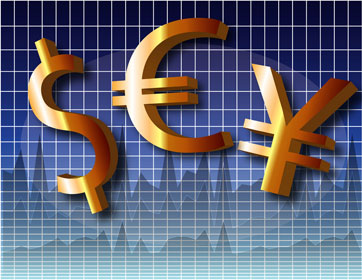Forex Market Overview
Introduction
The following facts and figures relate to the foreign exchange market. Much of the information is drawn from the 2007 Triennial Central Bank Survey of Foreign Exchange and Derivatives Market Activity conducted by the Bank for International Settlements (BIS) in April 2007. 54 central banks and monetary authorities participated in the survey, collecting information from approximately 1280 market participants.
Excerpt from the BIS:
"The 2007 survey shows an unprecedented rise in activity in traditional foreign exchange markets compared to 2004. Average daily turnover rose to $3.2 trillion in April 2007, an increase of 71% at current exchange rates and 65% at constant exchange rates...Against the background of low levels of financial market volatility and risk aversion, market participants point to a significant expansion in the activity of investor groups including hedge funds, which was partly facilitated by substantial growth in the use of prime brokerage, and retail investors...A marked increase in the levels of technical trading – most notably algorithmic trading – is also likely to have boosted turnover in the spot market...Transactions between reporting dealers and non-reporting financial institutions, such as hedge funds, mutual funds, pension funds and insurance companies, more than doubled between April 2004 and April 2007 and contributed more than half of the increase in aggregate turnover." - BIS
Structure
* Decentralised 'interbank' market
* Main participants: Central Banks, commercial and investment banks, hedge funds, corporations & private speculators
* The free-floating currency system arose from the collapse of the Bretton Woods agreement in 1971
* Online trading began in the mid to late 1990's
Source: BIS Triennial Survey 2007
Trading Hours
* 24 hour market
* Sunday 5pm EST through Friday 4pm EST.
* Trading begins in the Asia-Pacific region followed by the Middle East, Europe, and America
Size
* One of the largest financial markets in the world
* $3.2 trillion average daily turnover, equivalent to:
o More than 10 times the average daily turnover of global equity markets1
o More than 35 times the average daily turnover of the NYSE2
o Nearly $500 a day for every man, woman, and child on earth3
o An annual turnover more than 10 times world GDP4
* The spot market accounts for just under one-third of daily turnover
1. About $280 billion - World Federation of Exchanges aggregate 2006
2. About $87 billion - World Federation of Exchanges 2006
3. Based on world population of 6.6 billion - US Census Bureau
4. About $48 trillion - World Bank 2006.
Source: BIS Triennial Survey 2007
Major Markets
* The US & UK markets account for just over 50% of turnover
* Major markets: London, New York, Tokyo
* Trading activity is heaviest when major markets overlap5
* Nearly two-thirds of NY activity occurs in the morning hours while European markets are open6
5. The Foreign Exchange Market in the United States - NY Federal Reserve
6. The Foreign Exchange Market in the United States - NY Federal Reserve
Average Daily Turnover by Geographic Location
Source: BIS Triennial Survey 2007
Concentration in the Banking Industry
* 12 banks account for 75% of turnover in the U.K.
* 10 banks account for 75% of turnover in the U.S.
* 3 banks account for 75% of turnover in Switzerland
* 9 banks account for 75% of turnover in Japan
Source: BIS Triennial Survey 2007
Technical Analysis
Commonly used technical indicators:
* Moving averages
* RSI
* Fibonacci retracements
* Stochastics
* MACD
* Momentum
* Bollinger bands
* Pivot point
* Elliott Wave
Currencies
* The US dollar is involved in over 80% of all foreign exchange transactions, equivalent to over US$2.7 trillion per day
Currency Codes
* USD = US Dollar
* EUR = Euro
* JPY = Japanese Yen
* GBP = British Pound
* CHF = Swiss Franc
* CAD = Canadian Dollar (Sometimes referred to as the "Loonie")
* AUD = Australian Dollar
* NZD = New Zealand Dollar
Average Daily Turnover by Currency
N.B. Because two currencies are involved in each transaction, the sum of the percentage shares of individual currencies totals 200% instead of 100%.
Source: BIS Triennial Survey 2007
Currency Pairs
* Majors: EUR/USD (Euro-Dollar), USD/JPY, GBP/USD - (commonly referred to as the "Cable"), USD/CHF
* Dollar bloc: USD/CAD, AUD/USD, NZD/USD - (commonly referred to as the "Kiwi")
* Major crosses: EUR/JPY, EUR/GBP, EUR/CHF
Average Daily Turnover by Currency Pair
Source: BIS Triennial Survey 2007




